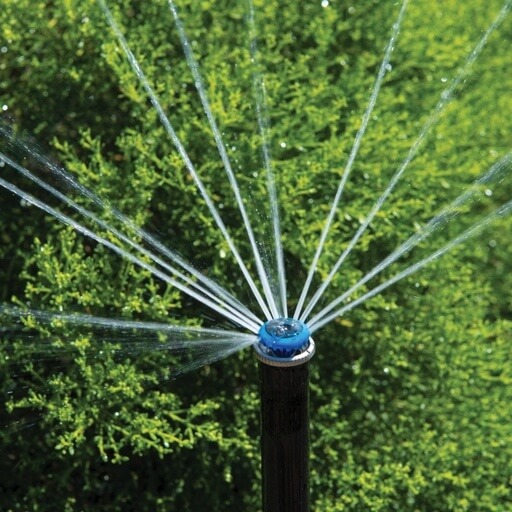Irrigation systems are a convenient and important landscape feature for a busy homeowner. An automated system allows for a lush, healthy and beautiful landscape. However, it can be easy to ‘set it forget it’ and not pay attention to the needs of your valuable plants. Overwatering and poor water management tend be the side effect to these great systems.
Overwatering is caused by running the sprinklers too long. It’s easy to let them run for an extra 10 minutes… just to make sure they are doing a good job. Most times the excess water will run off or puddle. The process of correct watering can be perfected on a trial and error basis. Run your sprinklers less and less every week and see when your lawn starts to yellow or stress. Once you have found this spot, increase the irrigation time to find your lawn’s happy place. There is a spot on most irrigation controls called seasonal adjustments. This is where you can increase the watering time in the summer and lower the watering in the spring and fall. Most irrigation controllers also offer a spot to plug in a rain sensor. This efficient feature automatically shuts down the sprinklers when it’s raining, allowing Mother Nature to water for you. If you notice that water is running down your sidewalk, driveway, or curbs you know you are watering too much. Soils can only hold so much water before the excess is puddling or running off.
Different areas of your landscape will require different amounts of water depending on sun and wind exposure. It’s important to know where these areas are in reference to the zones on your sprinkler system.
Running your sprinklers is best done in the evening hours… dusk to dawn. If sprinklers run during the day or when the sun is out, a portion of that water will be lost to evaporation. Avoid water waste and set your controller to late PM or early AM. Walk through and check on your landscaping regularly and take note of dry or wet areas. This is a good indication that your sprinkler heads are not working properly. Over time, heads will fall out of adjustment or have plants grow in front of their spray coverage. A few simple corrections to the sprinkler heads will keep your system running at peak efficiency.
Winterizing your system at the end of the summer is important otherwise water lines and sprinkler heads will freeze and crack. A powerful compressor is used to blow all the water out of the irrigation system, which protects it for the winter. Late September and early October is the best time to winterize your system.
Sprinkler systems are great for saving time and can be a very efficient way to deliver water to your valuable landscape. Be sure to check your system regularly throughout the summer and make adjustments as needed.
More Water-Wise Tips:
• Water early in the morning or in the evening. This reduces water loss to evaporation.
• If you are limited to how much water is available, prioritize water needs. Vegetable gardens and newly planted trees and shrubs require the most water. Turf grasses can be allowed to go dormant (brown) with less water. These grasses will green up once again when cooler weather returns.
• Cut back perennials that are done blooming. This redirects a plant’s energy to its roots instead of seed production.
• Water deeply, less often. A thorough soaking will promote deep rooting. Frequent light watering leads to shallow, drought-prone roots.
• Move planters and hanging baskets into the shade.
• Recognize drought-stress: Wilting is the most obvious sign. Brown or crispy tips or edges of leaves are another.
• Pay special attention to newly planted evergreens. These thirsty trees may not show signs of stress until months later when it’s too late. Check your irrigation and probe down into the soil to ensure water is reaching the root zone.
• Mulch is your friend. Applying a three-inch layer around trees, shrubs and perennial flowers will help retain soil moisture and suppress weeds.



